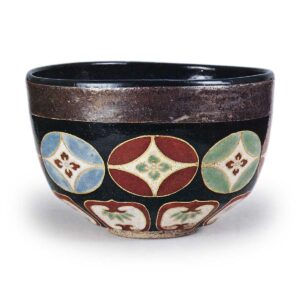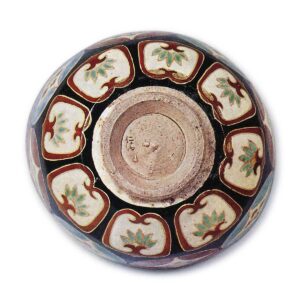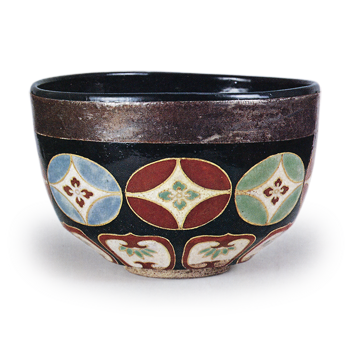

Height 8.3 cm, mouth diameter 11.7-12.7 cm, base diameter 4.5 cm
Although the shape and design are different, the glaze and overglaze painting techniques are almost the same as in Figure 22. The base glaze is a unique white glaze with a lot of feldspar, with black glaze inside and outside, a silver band around the outer mouth in overglaze painting, and a cloisonne and eight lotus petals design in overglaze painting on a white glaze in the center and hem of the body. Needless to say, he made full use of his original technique, which had not been seen in Japanese ceramics before Insei, and the design is truly Insei style.
Insei was truly skilled on the potter’s wheel. The way to take “ma” (space) to put together the shape elegantly is outstanding, and after water-grinding the bowl shape loosely, the shape of the tea bowl is tightened by removing the surface of the waist, and it is put together in an elegant manner. The base of the bowl is slightly low, and the inner side of the base has been cut diagonally, with a small kabukin standing in the center of the base.
It once belonged to the Mitsui family, and on the front cover of the inner box, “Hanawa-gaicha-bowl” is written in the calligraphy of Kanamori Munekazu.



